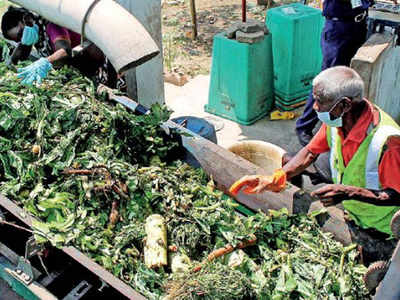The Hindu 18.07.2013
Coimbatore Corporation to study Warangal model of solid waste management
In its efforts towards improving waste collection and
transportation, the Coimbatore Corporation would study the Warangal
model of waste management, said Commissioner G. Latha.
Speaking
to reporters at the end of a slide show presentation at the Corporation
Kalaiarangam in the city on Tuesday, she said that the Corporation
would study how the Warangal Municipal Corporation had gone about
sharing revenue obtained from selling dry waste.
The
Warangal civic body had implemented a scheme wherein it allowed the
conservancy workers to weigh and register the dry waste they had
collected and then sell the same. The money obtained therefrom would be
spent on the workers.
Ms. Latha said that if the
Coimbatore Corporation were to adopt the model, it would first need the
State Government’s sanction and then the laws required to implement the
scheme.
At present the civic body did not have the required rules under which it could implement the scheme.
Ms.
Latha also said that the Corporation had to also study the manner in
which the Warrangal local body had tied-up with various agencies to
process wet and dry wastes.
Her understanding was
that the workers would sell the dry waste to the agencies and give the
wet waste as well for it to be converted to manure. Mayor S.M. Velusamy
said that though the Corporation was doing well, it had to do better.
It had to improve its waste collection and in doing so it needed the support of the conservancy workers.
The
workers should love the city and their job and only then would they be
able to maintain the city clean. He also spoke about the measures the
Corporation had initiated for the workers’ welfare.
M.J.
Muthukumaraswamy of Clean Cities Foundation, who made the slide show
presentation, said that the reasons behind the success of Warrangal
model of waste management was that the conservancy workers decided where
to place bins and how to about implementing the scheme.
They
designed the route chart and took up responsibility. And, two, they
became stakeholders in the system as they gained from selling dry waste.


